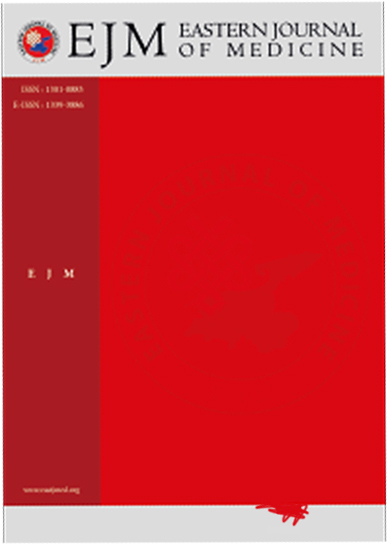Evaluation of Peritonitis Attacks in Patients Applying Peritoneal Dialysis
Ali Irfan Baran1, Mustafa Kasim Karahocagil2, Yasemin Usul Soyoral3, Gülsüm Mülayim41Departmant of Infectious Diseases and Clinical Microbiology, Van Yuzuncu Yil University, Van, Turkiye2Departmant of Infectious Diseases and Clinical Microbiology, Kirsehir Ahi Evran Yil University, Kirsehir, Turkiye
3Departmant of Department of Internal Diseases and Nephrology, Van Yuzuncu Yil University, Van, Turkiye
4Departmant of Infection Control Committee, Van Yuzuncu Yil University Medicine Faculty Dursun Odabas Medicine Center Hospital, Van, Turkiye
INTRODUCTION: Peritoneal dialysis is one of the renal replacement therapies used to treat patients with end-stage renal disease. Peritonitis is a common complication of peritoneal dialysis. Although the incidence of peritonitis has decreased, it is still a problem and the most important determinant of hospitalization, mortality, and morbidity. The aim of this study was to evaluate the incidence of peritonitis in peritoneal dialysis patients, compare culture methods, and determine the causative microorganisms and antibiotic susceptibility.
METHODS: Patients who were on the peritoneal dialysis treatment program and developed peritonitis were included in the study. Demographic, clinical, and laboratory data of the cases were recorded. The growth rates of pathogens in the peritoneal fluid, causative microorganisms, and antibiotic susceptibility results were evaluated in the peritonitis cases.
RESULTS: During the study, 47 episodes of peritonitis occurred in 28 patients. The mean incidence of peritonitis was 0.57 attacks/patient-year. Growth rates in the blood culture system and solid media were 51% and 46.1%, respectively, and there was no significant difference between them. According to the culture results, 75% were gram-positive and the most common pathogens were coagulase-negative staphylococci.
DISCUSSION AND CONCLUSION: In our study, no significant difference was found between inoculation of peritoneal fluid into blood culture bottles and solid media. The most common pathogens were coagulase-negative staphylococci. As methicillin-resistant staphylococci are common, treatment with vancomycin seems appropriate. It was thought that ceftazidime, which is used for gram-negative bacteria, may not be sufficient due to resistance, and studies with more gram-negative cases are needed to evaluate this.
Keywords: Peritoneal dialysis, peritonitis, microorganisms
Manuscript Language: English














